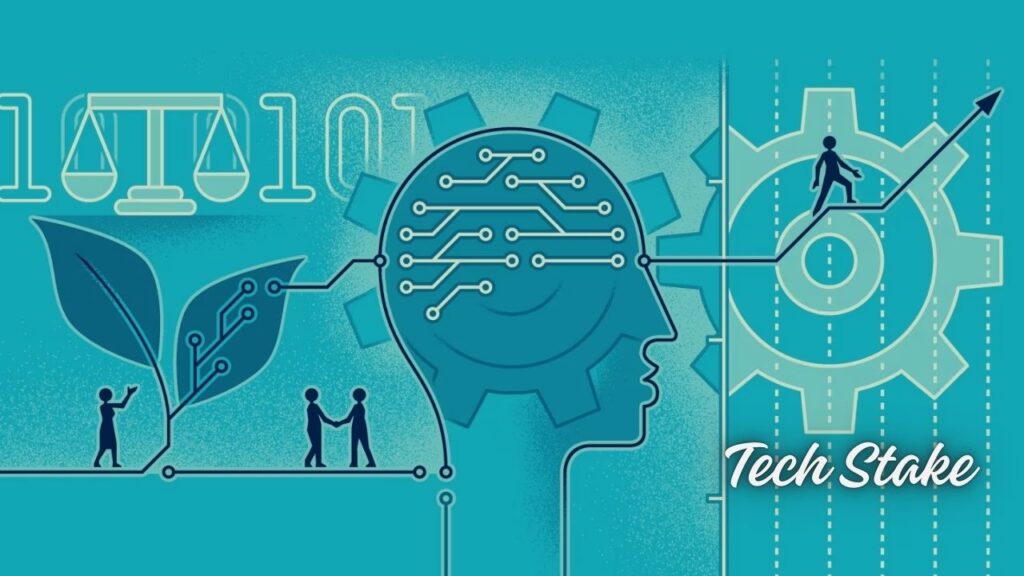In today’s digital age, understanding artificial intelligence (AI) is essential. This guide will help you navigate the complex world of AI acronyms, providing clarity and insight into their meanings and implications.
The Foundational Acronyms: Understanding AI’s Core Concepts
AI: Artificial Intelligence – The Cornerstone of Technological Innovation
Artificial Intelligence (AI) is the backbone of modern technology. It encompasses various systems that simulate human intelligence. From chatbots to self-driving cars, artificial intelligence is everywhere. According to a recent report, the global AI market is expected to reach $190 billion by 2025.
- Key Features of AI:
- Simulates human cognitive functions.
- Processes vast amounts of data.
- Learns and adapts over time.
ML: Machine Learning – The Adaptive Intelligence
Machine Learning (ML) is a crucial subset of artificial intelligence. It allows systems to learn from data rather than being explicitly programmed. ML algorithms can identify patterns, make predictions, and improve performance.
- Statistics:
- 70% of businesses believe ML will have a significant impact on their operations.
- The ML market is projected to grow to $117 billion by 2027.
Advanced AI Methodologies and Approaches

DL: Deep Learning – Mimicking the Human Brain
Deep Learning (DL) is a specialized form of ML that uses neural networks with multiple layers. This approach mimics how the human brain processes information. DL excels in tasks like image and speech recognition.
- Advantages of Deep Learning:
- Processes complex data types.
- Achieves high accuracy rates.
- Scales effectively with data size.
NLP: Natural Language Processing – Bridging Human and Machine Communication
Natural Language Processing (NLP) is the intersection of AI and linguistics. It enables machines to understand and generate human language. NLP powers various applications, from virtual assistants to translation services.
- Key Applications of NLP:
- Chatbots for customer service.
- Sentiment analysis in social media.
- Speech recognition systems.
Computational and Technical Acronyms
ANN: Artificial Neural Networks – The Brain of artificial intelligence Systems
Artificial Neural Networks (ANN) are computational models inspired by the human brain. They consist of interconnected nodes that process data, recognize patterns, and learn from experiences.
- Components of ANN:
- Input layer: Receives data.
- Hidden layers: Process data.
- Output layer: Produces results.
GPU: Graphics Processing Unit – Powering artificial intelligence Computations
Graphics Processing Units (GPUs) are essential for artificial intelligence computations. Originally designed for rendering graphics, GPUs are now vital for accelerating ML and DL processes. They handle parallel tasks efficiently, making them ideal for training complex models.
- Benefits of Using GPUs:
- Faster computation times.
- Enhanced performance for large datasets.
- Cost-effective for AI applications.
Learning and Adaptation Acronyms
AGI: Artificial General Intelligence – The Holy Grail of AI Research
Artificial General Intelligence (AGI) aims to create machines that can perform any intellectual task a human can. Unlike narrow AI, AGI would possess flexibility and adaptability across various domains.
- Key Characteristics of AGI:
- Understanding context.
- Learning from minimal data.
- Applying knowledge in diverse situations.
RL: Reinforcement Learning – Learning Through Interaction
Reinforcement Learning (RL) is a type of ML where agents learn by interacting with their environment. They receive rewards or penalties based on their actions, allowing them to develop strategies over time.
- Applications of RL:
- Game AI (e.g., AlphaGo).
- Robotics for automated tasks.
- Personalized recommendations in e-commerce.
Ethical and Strategic AI Acronyms

XAI: Explainable AI – Transparency in Intelligent Systems
Explainable AI (XAI) focuses on making AI systems transparent. It helps users understand how AI makes decisions, fostering trust and accountability. XAI is especially important in sectors like healthcare and finance.
- Importance of XAI:
- Builds user confidence.
- Reduces bias in decision-making.
- Enhances regulatory compliance.
AI EQ: Artificial Intelligence Emotional Intelligence
Artificial Intelligence Emotional Intelligence (AI EQ) refers to AI’s ability to recognize and respond to human emotions. This capability enhances interactions between humans and machines, making them more intuitive.
- Applications of AI EQ:
- Customer service bots that understand user sentiments.
- Mental health applications that offer emotional support.
- Interactive gaming experiences that adapt to player emotions.
Read This Blog Also : MyWebInsurance.com Home Insurance Affordable, Flexible
Emerging Technologies and Future Directions
GANs: Generative Adversarial Networks – Creative AI Innovations
Generative Adversarial Networks (GANs) consist of two neural networks competing against each other. This innovative approach enables the generation of realistic images, videos, and other content, pushing the boundaries of creativity in AI.
- Key Features of GANs:
- Generates high-quality outputs.
- Useful in art and design.
- Enhances data augmentation in training sets.
IoT AI: Internet of Things Artificial Intelligence – Connected Intelligence
Internet of Things (IoT) AI integrates AI with IoT devices. This synergy allows for smarter, connected systems that can analyze data from various sources, enabling real-time decision-making and automation.
- Benefits of IoT AI:
- Improved efficiency in operations.
- Enhanced user experiences through personalization.
- Real-time data analytics for better insights.
Implementation and Practical Applications
AI in Various Sectors
AI is transforming numerous industries. Here are some key applications:
- Healthcare:
- Diagnostic algorithms.
- Personalized treatment plans.
- Finance:
- Fraud detection.
- Algorithmic trading.
- Automotive:
- Autonomous driving systems.
- Predictive maintenance solutions.
Challenges and Considerations in AI Development
While AI offers numerous benefits, it also presents challenges:
- Bias in AI: AI systems can inherit biases from the data they are trained on, leading to unfair outcomes.
- Data Privacy: Ensuring user data is protected is paramount as AI systems often rely on vast amounts of personal data.
Ethical Implications and Responsible Innovation

The development of AI must prioritize ethical considerations. Addressing issues like bias, privacy, and transparency is essential for responsible innovation. Collaborative efforts among researchers, policymakers, and industry leaders are necessary to create standards that guide AI development.
Frequently Asked Questions
What is AI?
AI refers to the simulation of human intelligence in machines, enabling them to perform tasks that typically require human cognitive functions.
Why is ML important in AI?
Machine Learning allows AI systems to learn from data, improving their performance without explicit programming, making them adaptable and efficient.
What is the difference between AGI and narrow AI?
AGI aims for machines to perform any intellectual task a human can, while narrow AI focuses on specific tasks, such as language translation or image recognition.
How does XAI enhance AI systems?
Explainable AI makes AI decision-making transparent, helping users understand how conclusions are drawn, which builds trust and accountability.
What role do GPUs play in AI?
Graphics Processing Units accelerate AI computations by handling parallel tasks efficiently, making them vital for training complex machine-learning models.
Final Thoughts
Understanding AI acronyms is essential for anyone navigating the tech landscape. This guide covers foundational concepts, advanced methodologies, and emerging technologies. As AI continues to evolve, staying informed will empower professionals and enthusiasts alike.
Embrace the future of technology, and leverage the power of AI to drive innovation and solve complex challenges.

SEO expert focused on boosting online visibility and driving organic traffic. Passionate about data analysis, strategy, and the latest digital marketing trends.
















